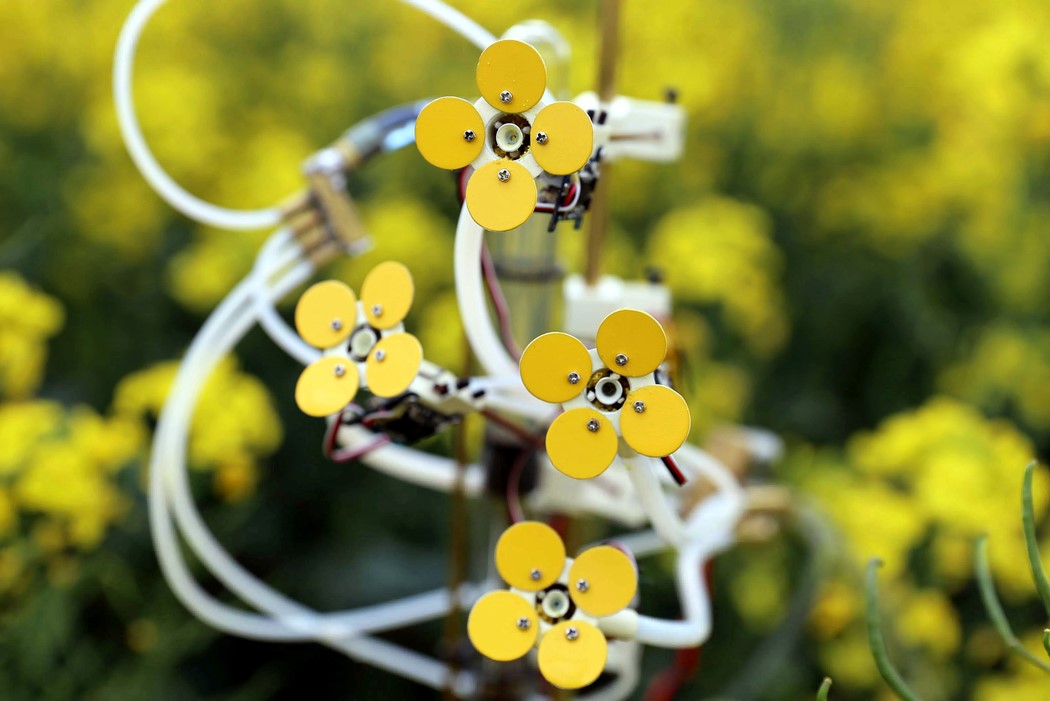What you’re looking at is a future where technology weaves itself irreversibly into our flora and fauna. The Synthetic Pollenizer allows plants to artificially reproduce by attaching pollen to the bee’s legs. The plant, in a lot of ways, works exactly like a normal flower, but with a bunch of gears, servo motors, and extruders. The Pollenizer collects pollen from pollen traps (used for medical purposes), and extrudes them onto stamens that move in and out of the flower, coating themselves with the powdery yellow material. In the center of the flower lies the nectar pit, which fills with artificial nectar that designer Michael Candy fashioned from sugar and water. The bees nest on the artificial flower to drink the nectar, and are coated (every time) with pollen. They then carry that pollen to real flowers, facilitating the reproduction process. There’s even a camera that livestreams the entire beautiful process of the bee flitting to the flower, drinking the nectar, and buzzing off with pollen attached to it.
Creating a convincing artificial pollinizer is difficult; bees are intelligent and are excellent navigators with highly acute sensors. The flowers are made from many different materials and processes, from 3d printed parts and glass to hand-machined aluminum and brass, with initial prototypes being made from paper. Michael Candy experimented with different breeds of flowers, from orchids to daisies. The flower shown here is the canola (or rapeseed) flower. What a world we live in! First Japan formulates drone bees to automate the pollination process, and now this artificial flower!
Designer: Michael Candy
